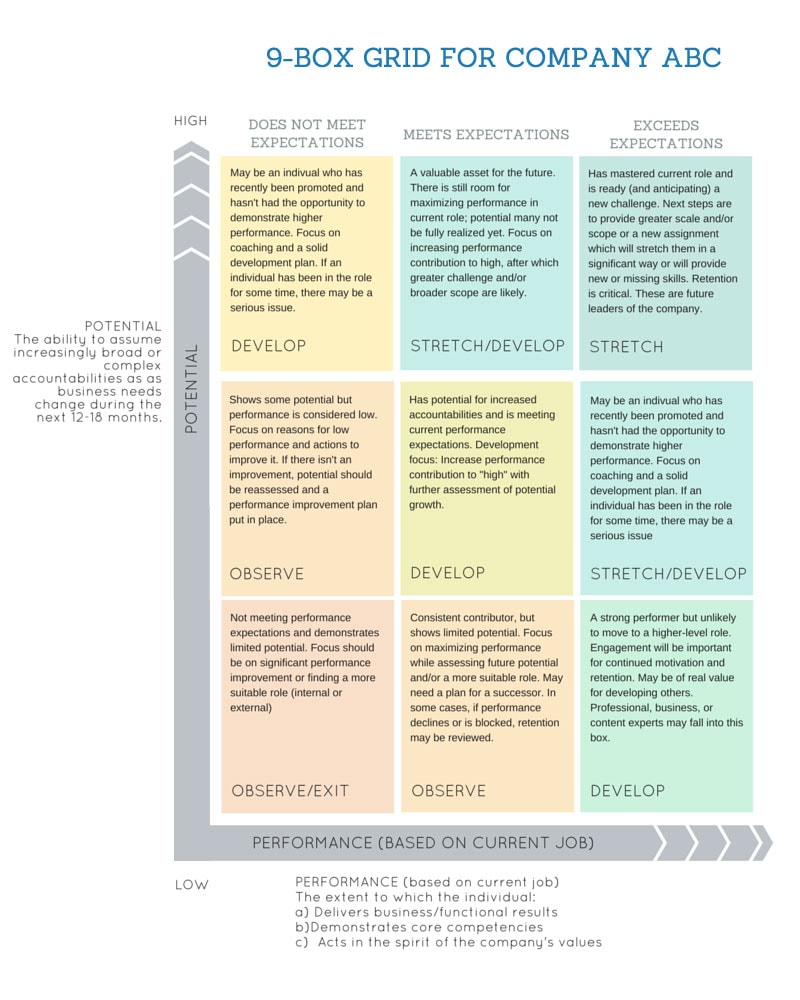
Most organisations are managed for mediocrity. Now that’s a BIG statement, but as you finish collating, analysing and reporting on this half-year’s performance appraisal results, you may just be starting to nod your head in agreement. This is also what authors Keller and Price discussed in their book, Beyond Performance: How Great Organisations Build Ultimate Competitive Advantage.
So, just how many average performers have you got?
Standardising performance management
A common problem is a disparity in how people are rated by their managers. Often the underlying cause is no mandated organisation-wide performance grading system such as the 9-box box or grid matrix shown in the following diagram.
The 9-box grid focuses on developing a matrix to standardise the measurement of performance versus potential. By dividing the measurement of current performance and future estimated potential into realistic expectations, you can assign values to those expectations and come to a conclusion. The idea is to ascertain whether the team member needs to be observed, developed, or pushed (stretched) to achieve better results.

Read more at Halogen Software.
Performance versus potential
Performance is based on the current job. This is the extent to which the team member delivers functional results, demonstrates core competencies, and acts in line with the company’s core values.
Potential is the ability to undertake increasingly broad or advanced accountabilities as the business requires during the next 12–18 months.
Barriers to a great performance management system
In addition to the disparity in the treatment of team member performance by their managers, a lack of mandated, standard, and universally applied KPIs is also a major underlying cause. KPIs can vary wildly from manager to manager and across departments.
Both factors contribute to compromised performance data being generated from the performance management system.
The problem of “can’t measure it if you can’t manage it” starts when the integrity of the measures is compromised.
But as you are reviewing your current results (you are doing a system review aren’t you?), you may consider introducing a 9-box grid into your system that measures performance and potential. This will help bring your KPIs and performance expectations into line across the board and foster positive working relationships and ideally – productivity!
Learn how to implement the 9-box grid
Get confident with your performance management system and upskill with the College for Adult Learning’s nationally accredited Project Management or HR Management diploma. You’ll learn how to implement the 9-box model, review, update and evaluate your current performance management system, develop agreed and mandated KPIs and train managers and supervisors to provide meaningful input and feedback into the performance review system.
Your Career in Human Resources
Do you want to learn more about HR skills employers demand, emerging job roles and salaries, and recent industry insights?
Discover your career in human resources.
HUMAN RESOURCES CAREER PAGE






